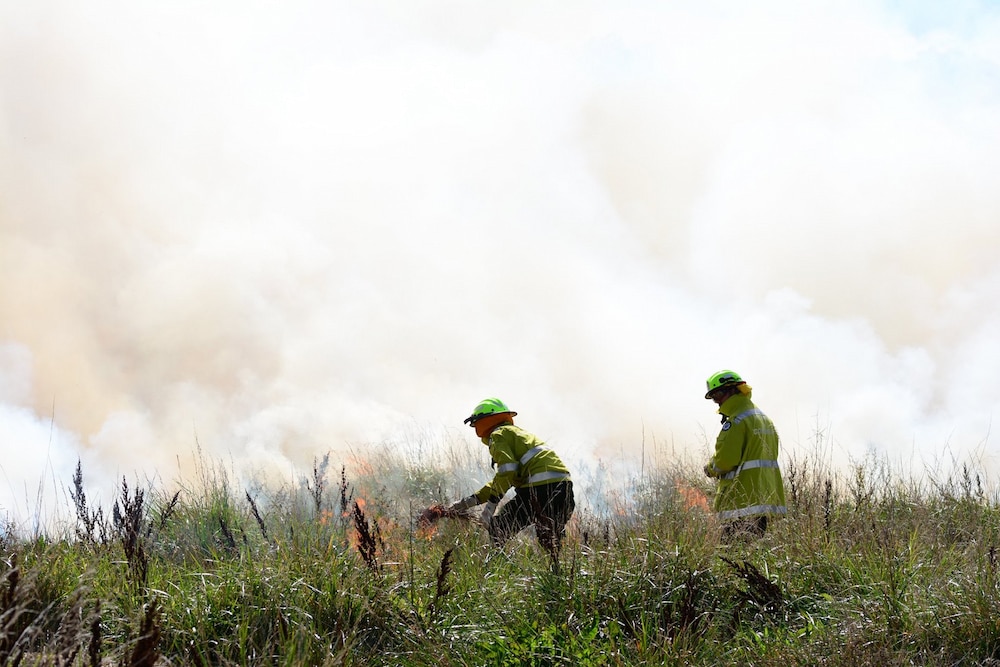Prescribed burning and logging can make natural forests more flammable, according to research from the Australian National University (ANU) and Curtin University published this week. The researchers argue that forestry and fire science must be connected to understand how fire prevention strategies affect the natural environment and to better prepare for bushfire seasons.
“We’ve understood for a long time now that logging can make bushfires worse, but it’s only in the last few years that evidence is showing that prescribed burning could be doing the same thing,” lead researcher Professor David Lindenmayer, an expert in forest ecology from ANU, said.
The ACT Government will review the outcomes of this research and consider the implications for the ACT’s fire management programs through the Regional Fire Management Plan and Strategic Fire Management Plan across the ACT, a spokesperson said.
The study challenges the notion that broadscale interventions are necessary to manage fire risk. The researchers argue that these are grounded in simplistic models that do not account for long-term dynamics.
Prescribed burns aim to minimise the intensity and severity of fires by reducing fuel load. However, while prescribed burns can sometimes decrease flammability in the short term, the researchers say that how they disrupt forest ecosystems can create longer periods of additional flammability.
“Very frequent burning close to homes or control lines could create defendable spaces, but large, remote and infrequent burns maintain the landscape at maximum fire risk because they undermine the natural controls that forests place on fire,” the study’s co-author, Associate Professor Philip Zylstra, a fire behaviour researcher from Curtin University, said.
Fire-sensitive species, he argues, thrived for millions of years because forests naturally create less flammable environments. Old forests tend to be cooler, moister, and more sheltered; plants that are too tall to catch fire calm bushfires by slowing the wind beneath them. However, if disturbance kills those taller plants, replacements regrow from the ground and add to the fuel.
“By limiting disturbance, forests can reach an appropriate age where they can be better protected from the increased frequency and severity of Australian bushfires,” Professor Zylstra said.
However, an ACT Government spokesperson contended: “Choosing not to actively manage fuel through prescribed burning is a bold and high-risk strategy. It can be argued that the 2003 fire season is our last experience of fire in a low fuel management environment.
“Recent fire history shows us that wildfire intervals are reducing, and climate change is likely to exacerbate this trend.
“Forest ecosystems are unlikely to have the same opportunity for a long period of time necessary to reset to a low fuel state in the future.”
The research introduces a unified framework to predict where disturbance is likely to cause a surge in flammability and bushfire risk. This predictive approach allows for better informed and targeted management strategies, researchers claim.
“We need to invest heavily in rapid response remote area firefighting specialists, and embrace new technologies that allow us to detect fires and suppress them faster,” Professor Lindenmayer said.
Advances in drone technologies and the application of AI can help detect small fires and even contain them before they develop.
“We need to be thinking about forestry and fire management in a more holistic way and look to limit actions that could be increasing flammability,” Professor Lindenmayer said.
An ACT Government spokesperson said the research would “add to the body of evidence” it already used “to ensure our bushfire management practices are up to date and in the best interest of our environment”.
“The ACT Government regularly monitors bushfire fuel loads and does not plan for or implement fuel management burns in areas of the landscape with low fuel loads. Our long term prescribed burning program is determined by careful analysis of likely fire spread pathways, high fuel loads, and potential impact on life, property, critical infrastructure and ecological, cultural and ecosystem service values such as water provision within our landscapes.”
The ACT has no native forest logging.
The ACT Parks and Conservation Service (PCS) Regional Fire Management Plan (RFMP), a long-term year plan for the management of bushfire risk on land managed by PCS, will be reviewed this year.
PCS is developing strategies to manage bushfire risk in a changing climate, manage fuel in the Orroral valley footprint, and protect critical ecological and ecosystem services, the spokesperson said.


